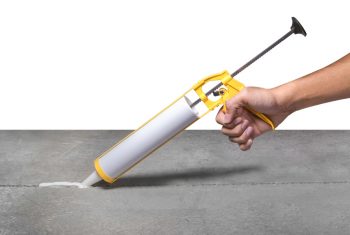
Choosing oil or water-based polyurethane can have drastic consequences for the longevity of your project.
For instance, water-based top coats are more resistant to denting, while oil-based ones are resistant to scratches. However, which polyurethanes are water-based, and which ones are oil-based? How can you tell?
When selecting a polyurethane product, you can determine if it is water or oil-based by several methods. Suppose we find that three are the most reliable.
- Locate the product on the manufacturer’s website.
- Call the manufacturer to ask them about the ingredients.
- Attempt to dilute a small amount with water and see what happens.
Water and oil-based polyurethane have different strengths, and I usually advise water-based products when heavy traffic is not a concern, but aesthetics are. On the other hand, oil is better for areas with significant wear and more protection.
This article will cover how to tell which polyurethanes are oil and water when buying. Then, I’ll cover a test you can do if you have old polyurethane around and can’t remember which it is.
2 Ways To Tell if Polyurethane Is Oil or Water Based

Whether buying a new polyurethane container or pulling an old can out of the basement, you’ll need to know what you are working with. There are two easy ways to tackle this problem.
1. Check the Manufacturer’s Information

The manufacturer usually has whether their product is oil or water-based posted somewhere.
The trick is finding it. This method can be used in most situations and is the only way to determine whether a product is oil or water-based without opening the can.
Places To Look for Information About a Product
- On the signage in the store or from the employee in that section (this is easiest but is the least reliable method).
- I am looking up the product on the manufacturer’s website (I believe this is the best method).
- Examining the can for an ingredients list or similar information (it is often – but not always – written somewhere on the can).
- Looking up the product on a large retail website like Amazon (this is hit and miss, as not every product has a comprehensive listing).
- Giving the company’s phone number a call to ask (sometimes a phone number is easier to find than the ingredients).
Remember that these companies are generally trying to sell their product. Therefore, it is in their best interest that their customers use their products properly and get good results.
Rarely will they decline to make this information available to you when asked directly. So while I usually do not have to call a company, it’s generally a very successful last resort.
2. Try To Dilute It With Water

The second method is more useful if you have already obtained the polyurethane you will be using. This is because it takes advantage of a simple chemical truth: oil and water will not mix.
Supplies
- Water
- The polyurethane you are testing
- A small to a medium-sized bowl
- A measuring cup
- A spoon
- A piece of scrap material
- A paintbrush
Process
- First, measure a small amount of polyurethane (about six ounces) and place it in the bowl.
- Add 2 ounces of water to the bowl.
- Using the spoon, gently stir the two liquids together.
- Let sit for two minutes.
- Apply the polyurethane to a scrap piece of material with a paintbrush.
- Let dry fully while monitoring how the polyurethane behaves.
Expected Results
Once the polyurethane has been cured, you will have your answer.
If polyurethane is water-based, it should normally dry and form an even coat when diluted with water.
However, if the polyurethane is oil-based, it will attempt to separate from the water during the drying process. This can cause a splotchy finish or remain wet for far longer than expected.
Choosing Oil or Water Based Polyurethane

When choosing a polyurethane finish, it is important to consider the type of wear the surface will see and the color of the surface. Drying time and cost are also important factors.
Color Fidelity
Water-based polyurethane provides superior color fidelity to oil-based polyurethanes. However, over time, many oil-based products darken or yellow slightly. This may not be very impactful on a dark color but can make white or light objects look unpleasant.
Wear and Maintainance
Polyurethane’s primary function is to protect a surface from wear and tear.
Water-based polyurethanes are usually thinner and require refreshing every two to three years to sufficiently protect the floor. Because water-based products dry harder, they are also more prone to chipping, exposing the material underneath.
Oil-based polyurethanes, in contrast, stand up to heavy traffic better and require less maintenance.
Drying Time
Even though water-based polyurethanes require more coats, they usually take less time to apply overall. This is because water-based polyurethane takes a fraction of the time to cure that oil does.
You can apply a new coat every couple hours and then use the object that same day. However, oil-based polyurethanes take several hours to dry between coats and an additional twelve hours after the final one.
You should expect to spend a couple of days finishing the surface before it is ready for use.
Cost
Although this is generally not the most important factor, it bears mentioning that water-based polyurethanes are usually about half the price of oil-based ones.
In my experience, this evens out over time because you need to reseal a water-based finish more often, but for a short-term project, you can choose water-based polyurethane to save some money.
Takeaway
Water-based polyurethane is great for decorative objects and surfaces that will see little wear. Oil, however, generally works better in high-traffic areas.
To determine which product you have, you can look for information from the manufacturer or attempt to dilute a small amount with water to see if it mixes properly.
Frequently Asked Questions
Which Is Thicker: Water or Oil-Based Polyurethane?
Oil-based polyurethane is usually thicker than water-based products because it has a higher ratio of solid ingredients. This means it provides better protection for a surface exposed to heavy traffic.
Can I Use Oil-Based Polyurethane With Water-Based Polyurethane?
You can sometimes use a water-based polyurethane over an oil-based one (or vice versa). However, the first polyurethane layer must be fully cured and prepped, or the new one will not adhere.
It would be best if you never attempted to apply oil and water-based products simultaneously.










